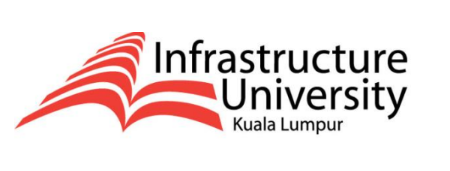The Foreign Currency Market Analysis: Emerging Market of Muslim Countries
DOI:
https://doi.org/10.21154/joie.v2i1.4681Keywords:
emerging, exchange rate, market, muslimAbstract
This study aims to analyze the relationship between Exports, Inflation, Money Supply, GDP, Imports, and Per capita Income to exchange rates. Where variable monetary policy (Exchange Rate, GDP, Money Supply, Inflation, Per capita Income) and macro policy (Export and Import). Using time-series data from 2010 to 2019. The data analysis model is a Vector Autoregression method viewed and sharpened by Impulse Response Function analysis and Forecast Error Variance Decomposition. The results of the IRF analysis know that the response stability of all variables is formed in the five or medium or medium-term and long-term periods, where the response of other variables to changes in one variable shows different variations from positive to negative responses or vice versa. Some variables show a positive reaction or remain negative in short to long term. The results of the FEVD analysis show that variable exchange rates in the short and medium term are recommended by the Variable Exchange Rate itself and the Money Supply Amount. At the same time, the long term is affected by Imports. Export variables in the short term are recommended by the Exchange Rate, while the medium and long term is affected by Per capita Income. Then, import variables in the medium and long short term Imports are affected by Exports. Variable GDP in the short and medium-term is influenced by GDP itself and the exchange rate, while in the long run, it is influenced by Per capita income. Inflation in the medium and long short term is affected by imports. The money supply in the medium and long short term is affected by inflation and imports, while exports influence per capita income in the short, medium, and long time. So that can be recommended in this study is as input for the government, namely through Bank Indonesia, the Ministry of Finance, the Central Banks of the State, which is the object of research in controlling exchange rates as an effort to maintain currency market stability in emerging markets of Muslim Countries through inflation control to increase price stability that can boost economic growth.References
Agustin, G. (2009). Analisis Paritas Daya Beli Pada Kurs Rupiah terhadap Dolar Amerika SErikat Periode September 1997 ”“Desember 2007 dengan Menggunakan Metode Error Correction Model. In Jurnal IESP: Vol. Vol 1, No,.
Ariefianto, D. (2012). Ekonometrika : Esensi dan Aplikasi Menggunakan EVIEWS. Erlangga Arikunto.
Aryani, S., & Murtala. (2019). Pengaruh Jumlah Uang Beredar (JUB) dan Ekspor Tembakau Terhadap Kurs di Indonesia. Jurnal Ekonomi Regional Unimal.
Bashir, Nawaz, & Qureshi, M. (2011). Determinants of Inflation in Pakistan: an Econometric Analysis Using Johansen Co-Integration Approach. Australian Journal of Business and Management Research, 1(5), 71”“82.
Bristy, H. (2013). Exchange Rate Volatility and Export of Bangladesh: Impact Analysis Through Contegration Approach. International Review of Business Research Papers, 121”“133.
Christianto, & Setiawan, Y. (2014). Analisis Pengaruh Ukuran Perusahaan, Tingkat Inflasi,Nilai Kurs Rupiah, terhadap Harga Saham (Studi Empiris pada Perusahaan Manufaktur yangTerdaftar di Bursa Efek Indonesia Tahun 2008 s/d 2011).
Ekananda, & Mahyus. (2014). Ekonomi Internasional. Erlangga.
Emilia, Rahma, N., & Aminah, S. (2015). Analisis Pengaruh Ekspor ke China terhadap Pendapatan Perkapita dan Penyerapan tenaga kerja di Indonesia. Jurnal Paradigma Ekonomika.
Faisol, N. (2016). Pengaruh Pertumbuhan Produk Domestik Bruto (GDP), Laju Inflasi dan Nilai Tukar Rupiah terhadap Nilai Impor Indonesia. Jurnal Ekonomi.
Farina, Fenin, & Husaini, A. (2017). Pengaruh Dampak Perkembangan Tingkat Empor dan Impor Terhadap Nilai Tukar Negara ASEAN Per-Dollar Amerika Serikat (Studi Pada International Trade Center Periode Tahun 2013-2015). Jurnal Administrasi, Vol.50 No.
Margareni, Purnama, A., Djayastra, K, Yasa, & Murjana, W. (2016). Faktor-Faktor Yang Memengaruhi Kemiskinan di Provinsi Bali. Jurnal Kependudukan Dan Pengembangan Sumber Daya Manusia, Vol. XII N, 101”“110.
Muchlas, Z. (2015). Faktor-Faktor Yang Mempengaruhi Kurs Rupiah Terhadap Dolar Amerika Pasca Krisis (2000-2010). Jurnal JIBEKA, Vol. 9 No.
Pratiwi, & Santoso. (2012). Analisis Perilaku Kurs Rupiah (IDR) Terhadap Dollar Amerika(USD) pada Sostem Kurs Mengambang Bebas di Indonesia Periode 1997.3-2011.4 (Aplikasi pendekatan Keynesian Sticky Price Model). Journal of Economics, Vol 1. No.
Pridayanti, A. (2014). Pengaruh Ekspor, Impor, Dan Nilai Tukar Terhadap Pertumbuhan Ekonomi Di Indonesia Periode 2002-2012. Jurnal Pendidikan Ekonomi (JUPE).
Rusiadi. (2018). Analisis Efektivitas Transmisi Kebijakan Moneter Jangka Panjang.
Setyorani, B. (2018). Pengaruh Nilai Tukar Terhadap Ekspor dan Uang yang Beredar Di Indonesia.
Shah, M., Aleem, M., & Nousheen, A. (2014). Statistical Analysis of the Factors Affecting Inflation in Pakistan. Middle-East Journal of Scientific Research, 21(1), 181”“189. https://doi.org/10.5829/idosi.mejsr.2014.21.01.21134.
Sukirno, S. (2010). Makro Ekonomi Teori Pengantar Edisi Ketiga. Rajawali Pers.
Tafti, F. (2012). Determinants of Inflation in Islamic Republic of Iran. Journal of Business and Social Science, 3(6), 197”“203.
Ulke, V. (2011). Econometric Analysis of Import and Inflation Relationship in Turkey Between 1995 and 2010. Journal of Economic and Sosiak Studies, 1(1), 69”“86.


















